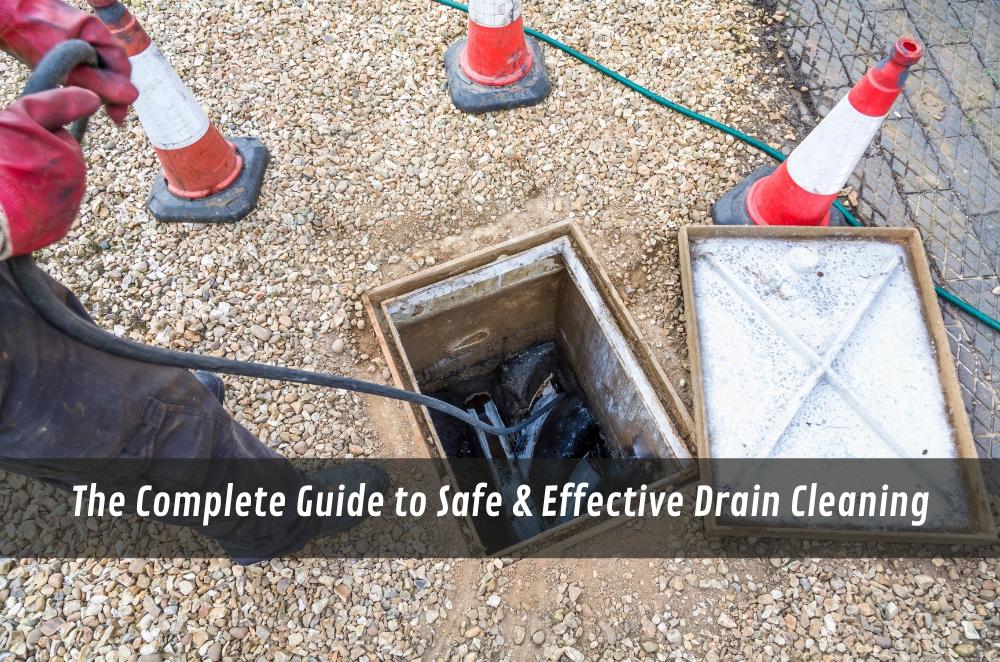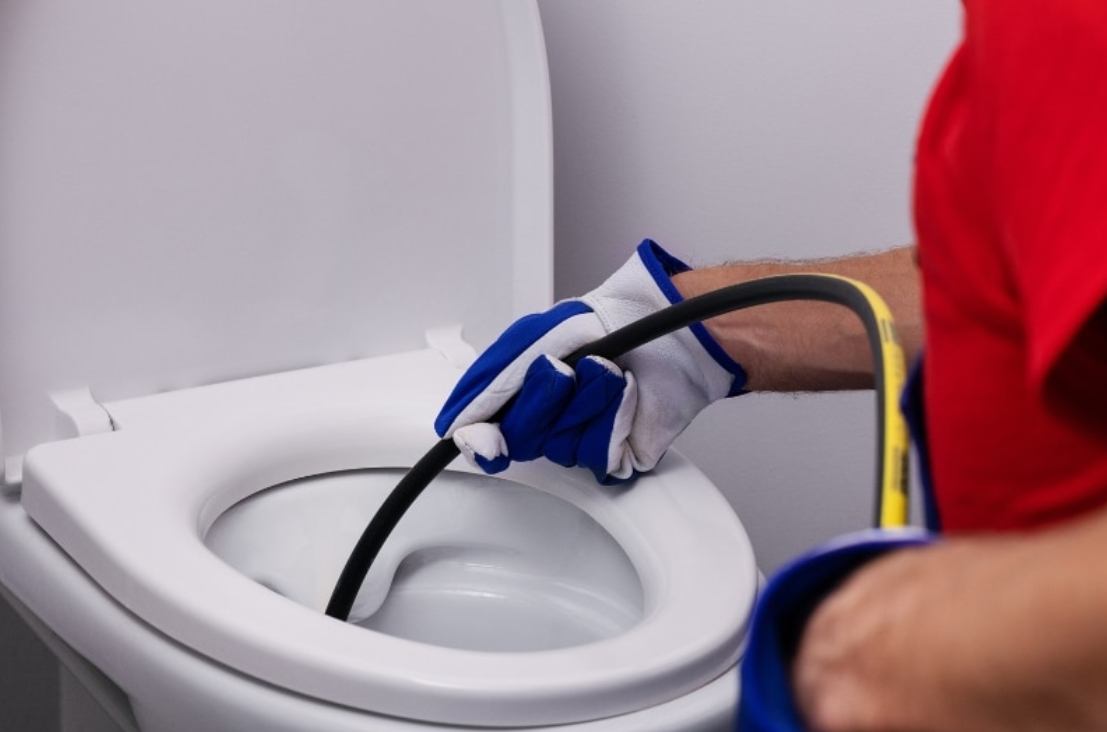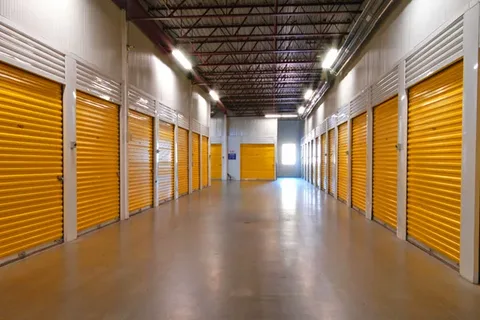The Complete Guide to Safe & Effective Drain Cleaning

Blocked drains are something every household faces sooner or later. A sink that won’t empty, a shower pooling around your feet, or an outdoor gully bubbling up after rain can all signal a problem underground. While there are quick fixes like plungers and hot water, some blockages cling stubbornly to the inside of pipes. In those moments, plumbers often rely on effective electric eel cleaning, a method where a flexible cable spins through bends and joints to cut away roots, grease, and debris. It’s not about brute force but about reaching what plungers and chemicals can’t. Done properly, it restores flow without damaging the line, and it’s one of the most practical ways to get drains working again. This guide explores how the process works, where it fits alongside other tools, and what to keep in mind before reaching for professional help.
How electric eel machines actually clear a blockage
Electric eel machines (often called drain snakes) drive a flexible, spinning cable through the pipe. As the cable advances, it scrubs and cuts through material that’s restricting flow—fat and food residue in a kitchen line, hair and soap in a bathroom branch, or roots pushing through an old clay joint. The goal isn’t noise or movement; it’s a clear passage that holds once fixtures start running again.
-
Works around tight bends that defeat rigid tools.
-
Cuts and retrieves debris instead of pushing it deeper.
-
Lets you dial in pressure so older pipes aren’t stressed.
-
Pairs neatly with inspection cameras for targeted work.
A quick on-site example: I was called to a terrace with a repeat shower blockage. Plungers hadn’t touched it. With the eel, I felt the cable chatter at a lip near a junction—classic soap scum fused with hair. A few gentle passes, withdraw, clean the head, and the trap is cleared. Flow returned without any harsh additives or guesswork.
To keep people and property safe around powered gear, SafeWork NSW sets expectations on equipment handling, electrical safety, and PPE. Their stance reinforces the basics: isolate power, maintain a stable footing, and stop the machine the moment the cable binds.
Safety, compliance and local responsibility
Staying safe isn’t only about gloves and goggles; it’s also about understanding how your property interfaces with public systems. Tree roots, surface runoff, and poorly graded sections can all influence how drains behave after a clean. If you want your maintenance to line up with council expectations, the City of Sydney guidance on drainage maintenance helps residents make sense of private drains, stormwater connections, and when to involve the right authority. That context keeps your approach measured and stops a simple fix from becoming a problem outside your boundary.
-
Confirm you’re working on a private line, not council infrastructure.
-
Keep the cord and machine dry; control the work area.
-
Fit a suitable cutting head for the material you expect.
-
Feed the cable lightly—if it binds, stop and reassess.
Build quality also matters. The Housing Industry Association highlights how design and installation choices—adequate fall, robust junctions, correct pipe materials—reduce recurring blockages. When the underlying setup is sound, every clean lasts longer.
Telling the difference between a one-off clog and a pipe-wide issue
Not every slow-draining drain point points to the same cause. A localised clog usually shows up in a single fixture, like a kitchen sink that’s been treated a bit roughly with oils and scraps. Wider problems—say, root intrusion in the main—tend to announce themselves across multiple fixtures at once. Knowing the difference keeps the fix proportionate to the fault.
-
Single fixture slow? Think local build-up before major works.
-
Multiple fixtures gurgling? Consider the main-line restriction.
-
Strong odour near a gully? Check for partial overflow or trapped debris.
-
Recent landscaping? Roots or shifted soil might be the culprit.
On a duplex in the inner west, I cleared a bathroom line with the eel, and everything seemed fine—until the laundry backed up the next day. That pointed to the main, not the branch. We scoped it and found roots chewing through an old collar. The lesson: treat each symptom as part of a bigger pattern.
Knowing when to bring in a licensed professional
DIY can handle a fair bit, but there are clean lines where a licensed pro makes sense. If the cable binds hard, if you’re seeing repeat blockages in short order, or if the line has fragile sections, pushing on can turn a small inconvenience into a bigger repair. In those cases, it helps to understand when to call a licensed plumber for drain cleaning so you can time the handover well and keep control of the next step.
-
Recurring clogs across multiple fixtures signal a deeper fault.
-
Clay or brittle PVC needs a lighter touch and careful head choice.
-
Signs of collapse or heavy root mats call for a camera before action.
-
After renovations, confirm that new connections have proper fall.
The Housing Industry Association’s emphasis on compliant installation ties in here: if poor gradients or mismatched materials are the root cause, no amount of cutting will create a lasting fix. Diagnosis first, then method.
Matching the method to the problem you actually have
An eel is brilliant at cutting and retrieving debris; a jetter excels at washing fine material and grease from the pipe wall. If you’ve cleared a blockage with a cutter but the flow remains sluggish, a flush may finish the job. It isn’t a contest between tools—it’s about choosing the sequence that gives you a durable result. When you need a side-by-side perspective that squares with the job at hand, it’s useful to compare an electric eel vs a water jetter so the choice reflects the fault, the pipe material, and the access you’ve got on site.
-
Eel for roots, rags, and hard obstructions that need cutting.
-
Jetter for grease, silt, and fine residue on pipe walls.
-
Combination approach: cut, then flush for lasting flow.
-
Confirm with a camera if symptoms persist.
Water habits play a role, too. Waterwise promotes simple behaviours—keeping fats out of sinks, using strainers, and spacing high-volume appliance cycles—that ease the load on wastewater lines. Good habits won’t cure a collapsed junction, but they do cut down on the kind of residue that turns a small snag into a stubborn blockage.

Preventing future blockages without harsh additives
Prevention keeps your system steady and reduces the need for hard mechanical work. Think like you would with regular car servicing: small, consistent actions that avoid big repairs.
-
Keep fats, oils, and coffee grounds out of kitchen drains.
-
Fit and clean strainers in showers and sinks.
-
Trim or manage roots near older clay or earthenware lines.
-
Book periodic inspections if your home has a history of issues.
A brief field note: after a clean on a heritage cottage, we added a simple maintenance routine—monthly trap checks and seasonal garden pruning around the line. Twelve months later, no callbacks. The difference wasn’t a miracle tool; it was steady, low-effort habits.
Final thoughts
A steady, methodical approach keeps drain cleaning safe and effective. Start with the clearest likely cause, pick the tool that suits the material in front of you, and stay mindful of how your property connects to the wider network. If anything feels uncertain, pause and reassess. That one decision protects your pipework and keeps the whole system flowing the way it should.






